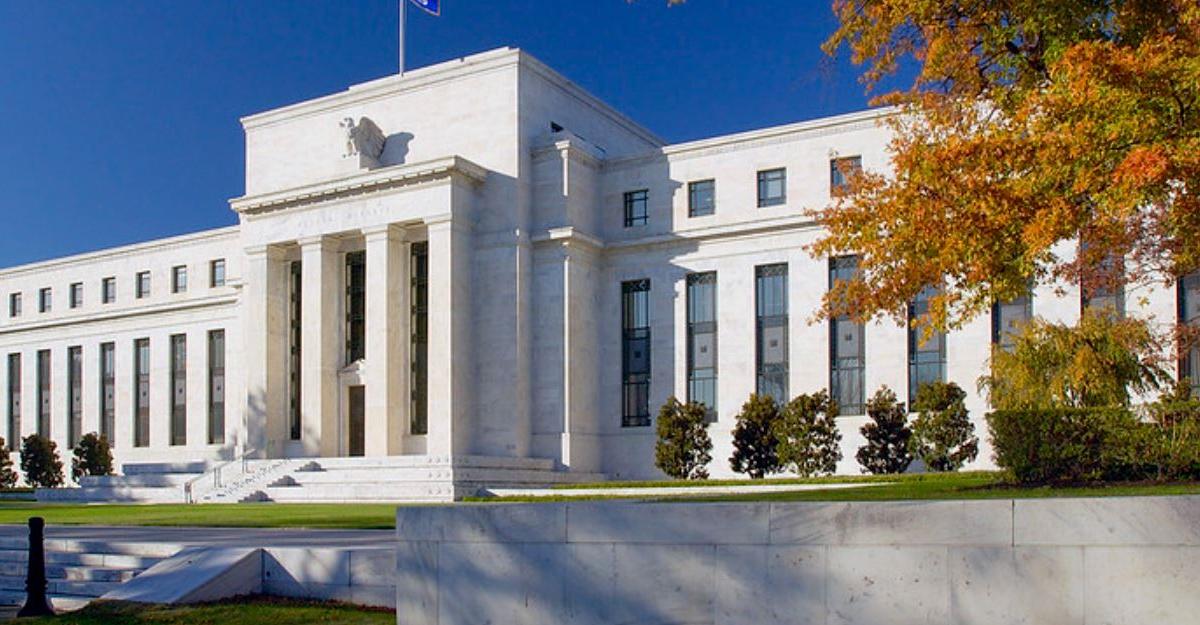
Applying Volcker’s Lessons
[Originally published by Law and Liberty.]
The year 2022 has certainly been a tough one for the Federal Reserve. The Fed missed the emergence of the runaway inflation it helped create and continued for far too long to pump up the housing bubble and other asset price inflation. It manipulated short- and long-term interest rates, keeping them too low for too long. Now, confronted with obviously unacceptable inflation, it is belatedly correcting its mistake, a necessity that is already imposing a lot of financial pain.
Sharing the pain of millions of investors who bought assets at the bloated prices of the Everything Bubble, the Fed now has a giant mark-to-market loss on its own investments—this fair value loss is currently about $1 trillion, by my estimation. It is also facing imminent operating losses in its own profit and loss statement, as it is forced to finance fixed-rate investments with more and more expensive floating rate liabilities, just like the 1980s savings and loans of Paul Volcker’s days as Fed Chairman.
In short, the Fed, along with other members of the international central banking club, sowed the wind and is now reaping the whirlwind. Comparing the current situation with the travails of the Volcker years grows ever more essential.
Samuel Gregg, Alexander Salter, and Andrew Stuttaford have provided highly informed observations about the past and present, and offer provocative recommendations for the future of the “incredibly powerful” (as Gregg says) Federal Reserve—the purveyor of paper money not only to the United States, but also to the dollar-dominated world financial system.
Stuttaford considers the issue of “Restoring the Fed’s Credibility?” with a highly appropriate question mark included. He points out that Volcker did achieve such a restoration of credibility and ended up bestriding “the [wide] world like a colossus,” although, we must remember, not without a lot of conflict, doubt, and personal attacks on him along the way.
But is it good for the Fed to have too much credibility? Is it good for people to believe that the Fed always knows what it is doing, when in fact it doesn’t—when it manifestly does not and cannot know how to “manage the economy” or what longer-run effects its actions will have and when? Is it good for financial actors to believe in the “Greenspan Put,” having faith that the Fed will always take over the risk and bail out big financial market mistakes? It strikes me that it would be better for people not to believe such things—for the Fed not to have at least that kind of “credibility.”
Stuttaford elegantly and correctly, as it seems to me, suggests that “the price of a fiat currency is—or more accurately, ought to be—eternal vigilance against inflation.” Such eternal vigilance requires that we should never simply trust in the Fed and poses the central question of who is to exercise the eternal vigilance.
It is often argued, especially by economists and central bankers, that central banks should be “independent,” thus presumably practicing by themselves the vigilance against inflation, making them something like economic philosopher-kings. Indeed, inside most macro-economists and central bankers there is a philosopher-king trying to get out. But the theory of philosopher-kings does not fit well with the theory of the American constitutional republic.
Those who support central bank independence always argue that elected politicians are permanently eager for cheap loans and printing up money to give to their constituents, so can be depended on to induce high inflation and cannot be trusted with monetary power. But if the central bank also cannot be trusted, what then? Suppose the central bank purely on its own commits itself to perpetual inflation—as the Fed has! Should that be binding on the country? I would say No. The U.S. Constitution clearly assigns to the Congress, to the elected representatives, to the politicians, the power “to coin money [and] regulate the value thereof.”
Salter suggests we should follow this constitutional logic. “The Fed should have a single mandate,” he recommends, that of price stability, and “Congress should pick a concrete inflation target.” The Fed wouldn’t get to set its own target: “Since the Fed can’t make credible commitments with a self-adopted rule, the target’s content and enforcement must be the prerogative of the legislature, not the central bank.” In sum, “As long as we’re stuck with a central bank, we should give it an unambiguous mandate and watch it like a hawk. Monetary policymakers answer to the people’s representatives, in Congress assembled.”
Along similar lines, I have previously recommended that Congress should form a Joint Committee on the Federal Reserve to become highly knowledgeable about and to oversee the Fed in a way the present Banking committees are not and cannot. I argued:
“The money question,” as fiery historical debates called it, profoundly affects everything else and can put everything else at risk. It is far too critical to be left to a governmental fiefdom of alleged philosopher-kings. Let us hope Congress can achieve a truly accountable Fed.
This still seems right to me. As I picture it, however, neither the Federal Reserve nor the Congress by itself would set an inflation target. Rather, on the original “inflation target” model as invented in New Zealand, the target would be a formal agreement between the central bank and the elected representatives. New Zealand’s original target was a range of zero to 2% inflation—a much better target than the Fed’s 2% forever. Since an enterprising, innovative economy naturally produces falling prices through productivity, we should provide for the possibility of such “good deflation.” Hence my suggested inflation target is a range of -1% to 1%, on average about the same target Alan Greenspan suggested when he was the Fed Chairman, of “Zero, properly measured.”
In his insightful history of the Fed, Bernard Shull considered how the Fed is functionally a “fourth branch” of the U.S. government. The idea is to put this additional branch and the Congress into an effective checks-and-balances relationship.
Among other things, this might improve the admission of mistakes and failures by the Fed, and thus improve learning. As Gregg observes, “Admitting mistakes is never something that policymakers are especially interested in doing, not least because it raises questions about who should be held accountable for errors.” And “central bankers do not believe that now is the time for engaging in retrospectives about where they made errors.” Of course they don’t. But are you more or less credible if you never admit to making the mistakes you so obviously made?
Gregg is skeptical of the ability to control central banks by defined mandates, since we are always faced with “the ability of very smart people to find creative ways around the strictest laws (especially during crises).” The politicians, he points out, often want the central banks to use creative rationales for stretching and expanding their limits, and this is especially true during crises. As a striking example, “the European Central Bank has engaged in several bailouts of insolvent states and operated as a de facto transfer union.” But “governments…say as little as possible about such ECB interventions (and never question their legality),” and this “has everything to do with European governments wanting the ECB to engage in such activities.”
We are left wondering, as always, who will guard the guardians. There has been no easy answer to that question since Juvenal posed it to the ancient Romans.
Another Roman, Velleius Paterculus, expressed another fundamental central banking problem: “The most common beginning of disaster was a sense of security.” It is most dangerous when the public and the central bankers become convinced of the permanent success of the latest central banking fashion, especially, as Volcker pointed out in his autobiography, if that involves accommodating ever-increasing inflation.
We can conclude our review by stressing that the price of having fiat money is indeed eternal vigilance against inflation. But we don’t know very well how to carry out that vigilance and we can’t count on a new Volcker appearing in time to prevent the problems, or belatedly to address them, or appearing at all.



